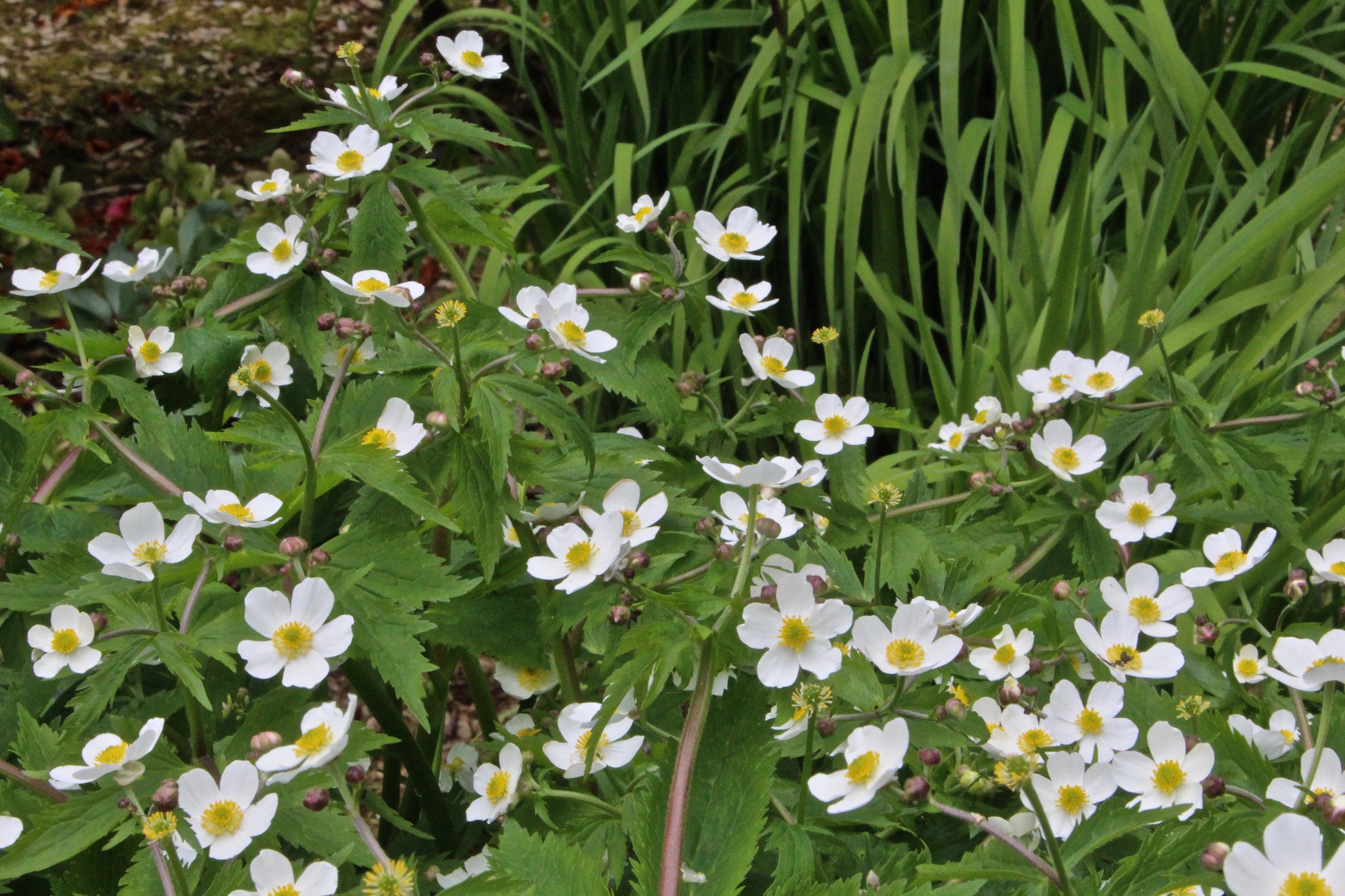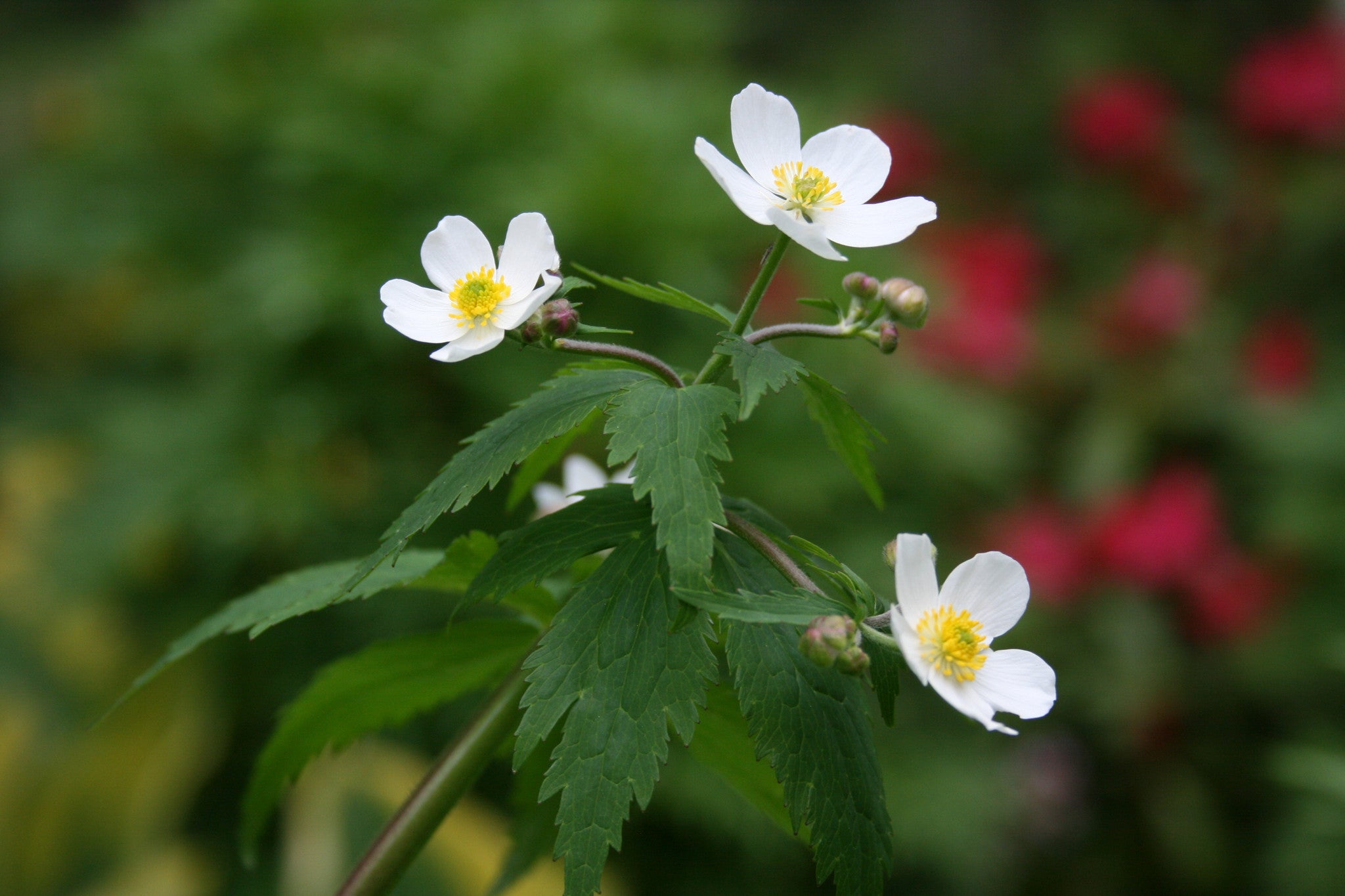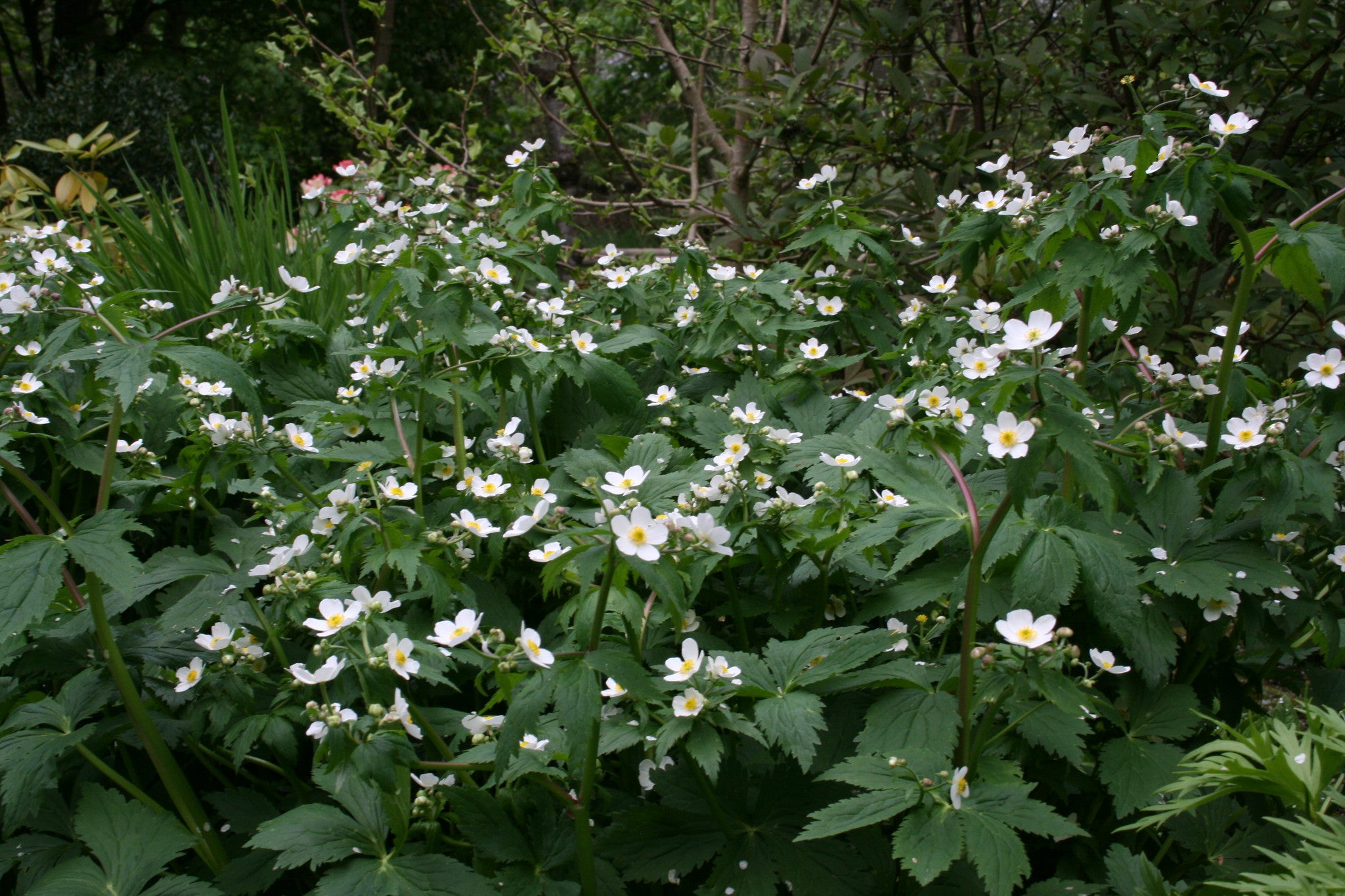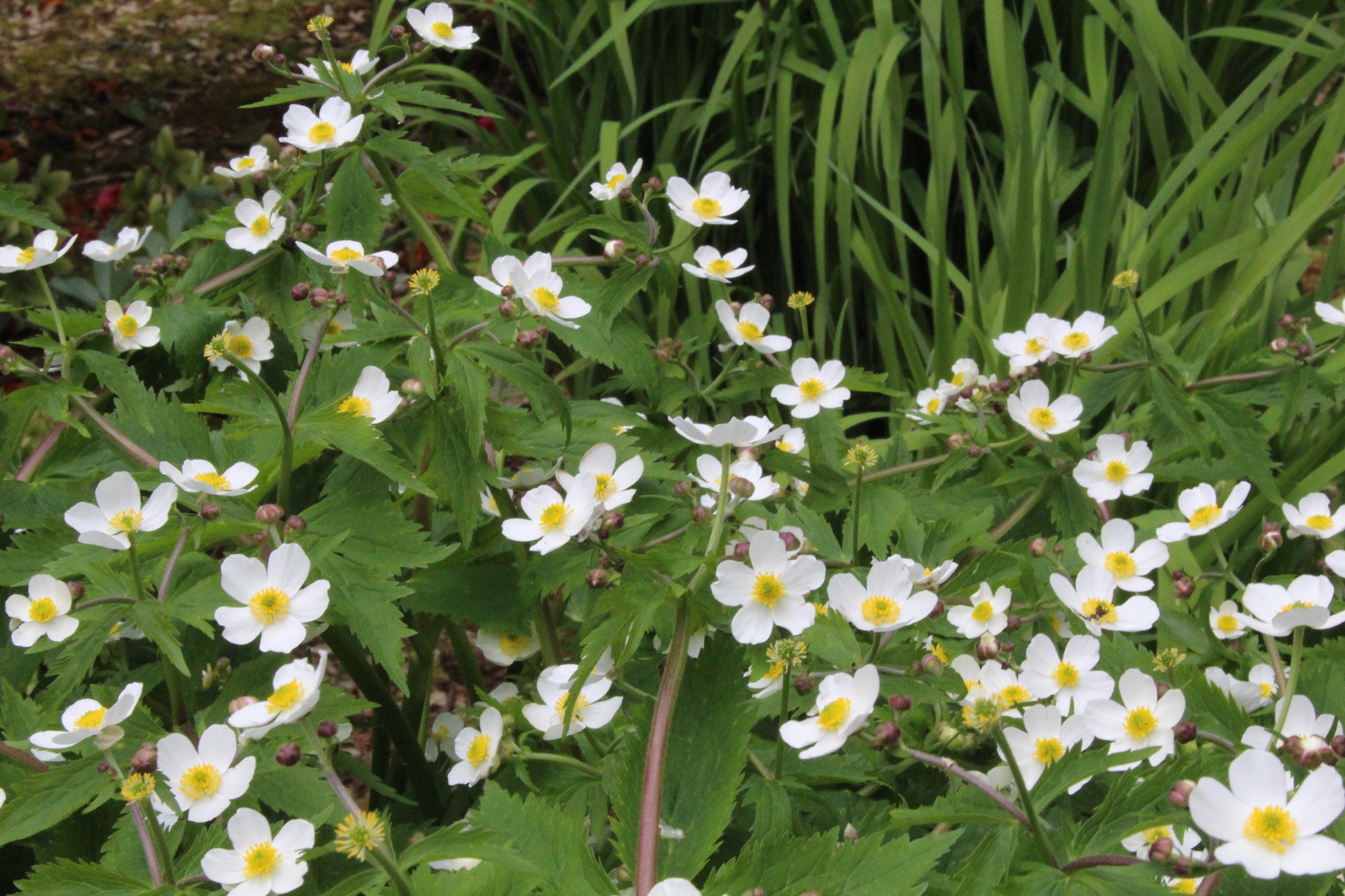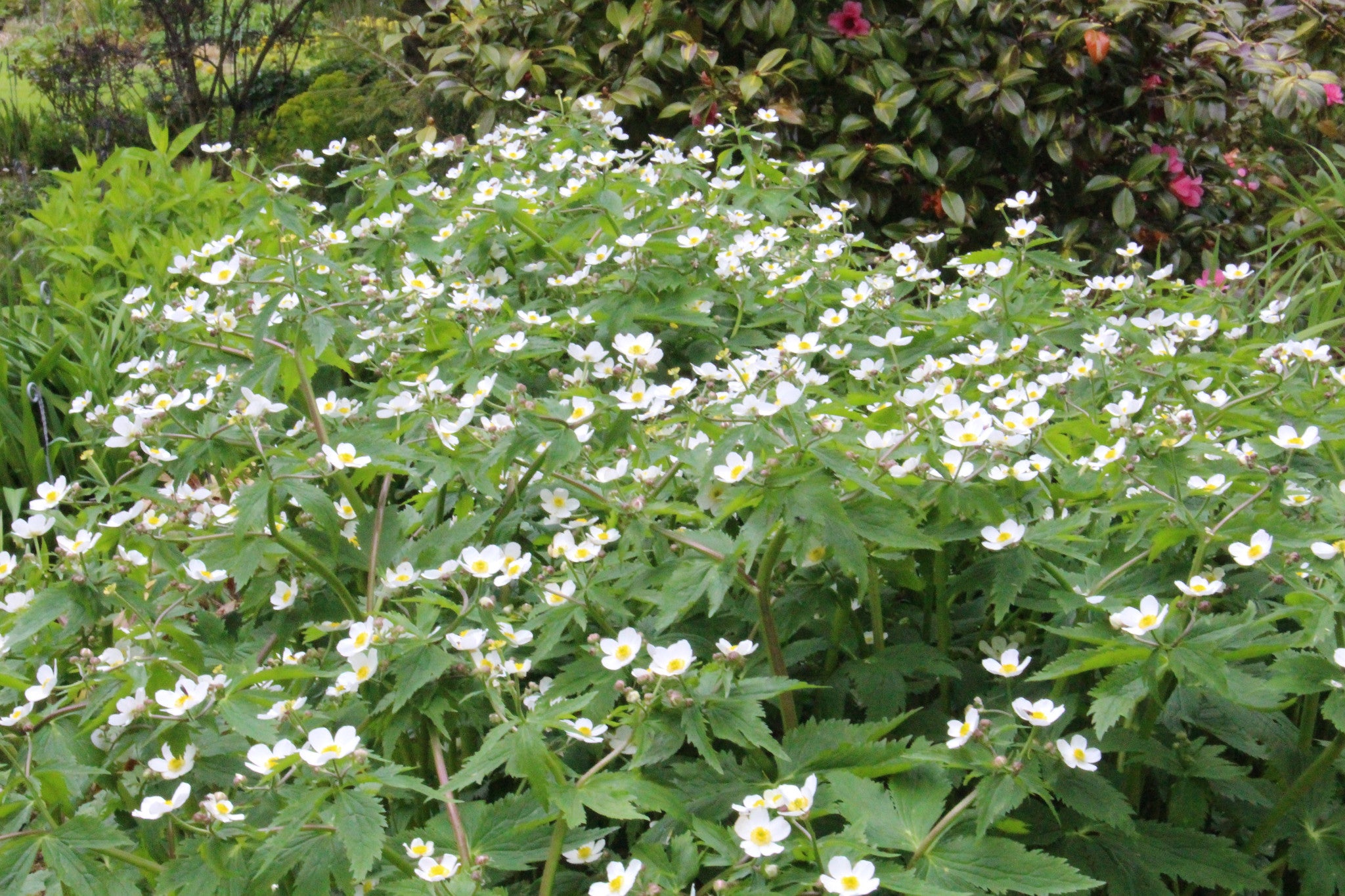Ranunculus aconitifolius
Approx. 0.5 litre pot
About this cultivar:
Ranunculus aconitifolius in a popular plant - and rightly so. Quite large and bushy, it still has a light, airy feel to it. Lots of white flowers with yellow centers. Ours grows quite tall - about 4 feet.
- Position: Full sun, Partial shade
- Soil: Almost any soil, grows well in Ballyrobert
- Flowers: April, May, June
- Other features: -
- Hardiness: Fully hardy, grows well in Ballyrobert
- Habit: Clump forming
- Foliage: Deciduous
- Height: 90 - 120 cm (3 - 4 ft)
- Spread: 60 - 90 cm (2 - 3 ft)
- Time to full growth: 2 to 5 years
- Plant type: Herbaceous Perennial
- Colour: Green, white
- Goes well with: --
About this genus:
Ranunculus (ra-nun-kul-us) is a large genus of about 600 species of plants in the buttercup family (Ranunculaceae). They are mostly herbaceous perennials with bright yellow or white flowers, however quite a few species bred for the cut flower industry have orange or red flowers. Ranunculus usually flower in the spring, but flowers may be found throughout the summer.
The name comes from Latin for little frog, from rana frog and a diminutive ending. This probably refers to many species being found near water. The common name buttercup may derive from a false belief that the plants give butter its characteristic yellow hue (in fact it is poisonous, and horrible to taste, to cows and other livestock).
Long appreciated for their beauty, the herbalist Gerard wrote enthusiastically about the Double White Crowfoot (as he called it) in 1596. The plant is thought to have arrived in Britain about 20 years earlier, brought across by Huguenot refugees fleeing from France. The double form - which occurs naturally - is commonly called Fair Maids of France, after its former home.
Easy to grow on these islands, they tolerate almost any soil that isn't a pond and almost any situation from full-sun to almost full shade. We love them and have a preference for the floriferous cultivars. The species can tend to seed everywhere - you can avoid this by selecting a double-flowered cultivar!

